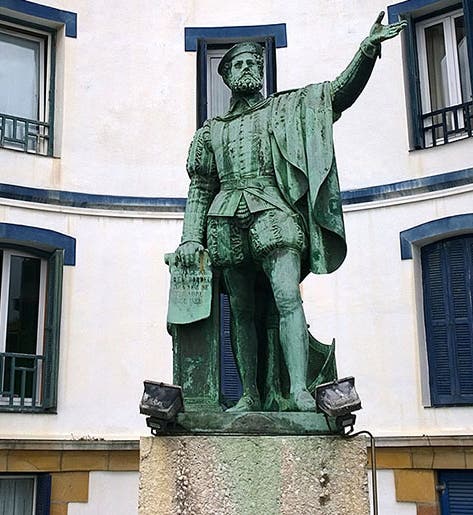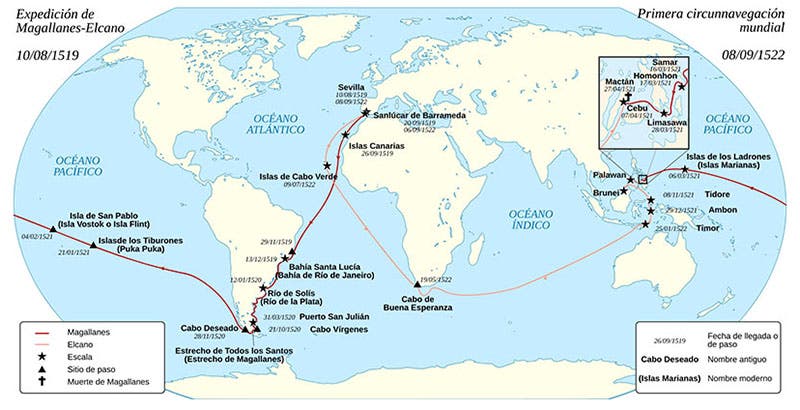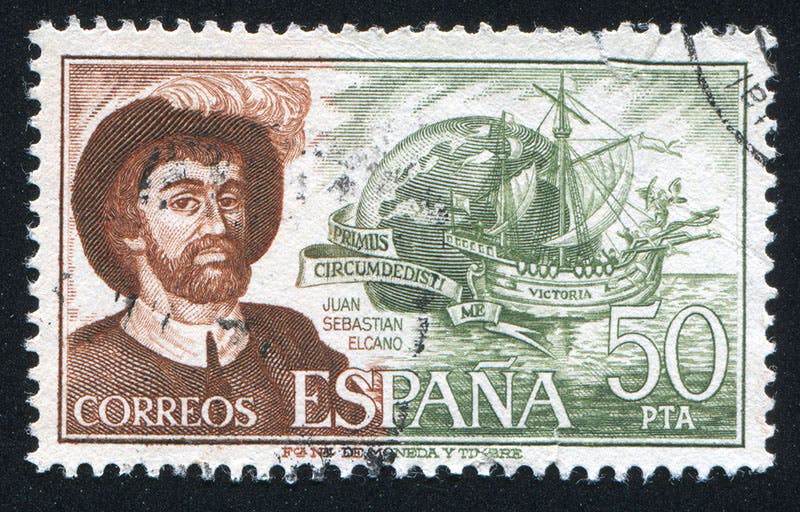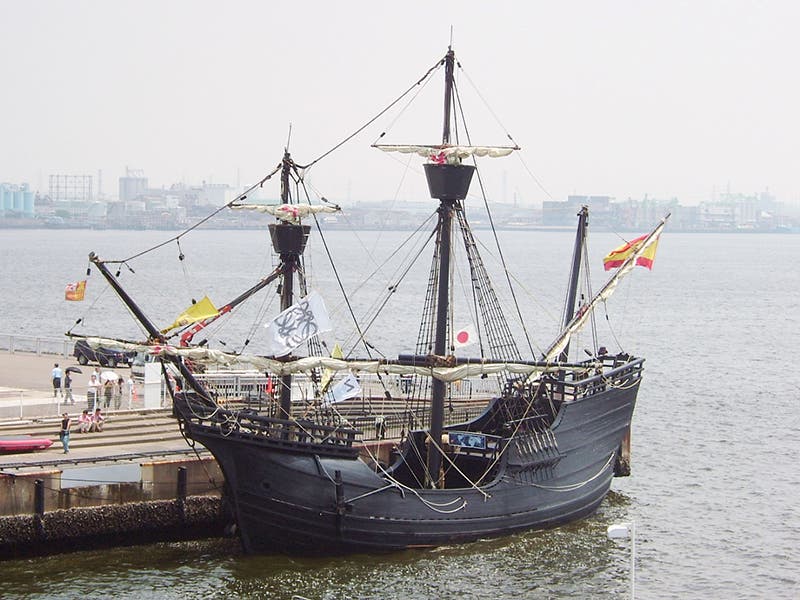Scientist of the Day - Juan Elcano
Juan Sebastián Elcano, a Spanish Basque navigator, died Aug. 4, 1526, at the age of about 50. Elcano was not the first man to circumnavigate the globe – he shared that honor with 18 bedraggled and scurvy-ridden seamen – but he found himself, through an unlikely series of events, in command of the first ship to sail around the world, and thus he is often considered the first circumnavigator. He started out as an ordinary officer on one of the five ships that set out from Spain in 1519, under the command of Ferdinand Magellan (see map, below). Magellan, being Portuguese, had his hands full with three of his captains, who were Spanish and immediately began plotting to get rid of their leader. There was a mutiny early on, and Elcano took the side of the Spanish mutineers, which could have cost him his life – others who took part were executed by Magellan – but Magellan pardoned Elcano, for reasons we can only guess at, since Magellan’s log does not survive. Three ships made it through the straits of Magellan to the Pacific (one foundered, another fled back to Spain), with crewman dying right and left. The 110-day Pacific crossing took more lives, mostly from scurvy, and by the time they reached the Philippines, the original crew of perhaps 280 was down to half that. More died in the Philippines, including Magellan himself, and soon they were reduced to two ships, the Victoria and the Trinidad. Elcano was not yet in command of either. The ships headed for the Moluccas – the Spice Islands – to fill their holds and satisfy the stockholders (and themselves – each crewman got a share of the cargo). During the trip, the captain of the Victoria showed his ineptitude, and at this point, Elcano was given command. The ships filled up on cloves at Tidore, but the Trinidad then completely lost her seaworthiness and had to stay put, so Elcano decided to head solo across the Indian Ocean with his crew of 39, and 36 tons of cloves in the ship's belly. The journey got more and more difficult, and the crew continued to shrink. By the time they got around Africa, they numbered about 31, and when they stopped at the Cape Verde Islands, 13 of those who went ashore were captured by the Portuguese. So in 1522, Elcano sailed into port with his 18 survivors, and the world’s first circumnavigation was completed.
Elcano was immediately feted by Emperor Charles V (who was also King Charles I of Spain), and for good reason, since his empire had grown immensely as a result of the voyage. Charles also confiscated all the records of the voyage and suppressed them, so that the Portuguese could learn nothing about the extent of the Pacific. But he rewarded Elcano with a pension and his own coat of arms, which was rather unprecedented. His new shield was crowned with a globe, and the motto: Primus circumdedisti me, "you were the first to encircle me". Normally only Emperors and Kings had devices like that. Elcano should have retired at that point, but Charles sent him out on a second voyage to the Spice Islands in 1525, and on this date in 1526, his luck ran out, and he succumbed to either scurvy or some other tropical miasma.
There is some debate about the worthiness of Elcano as a navigator – hardly anyone puts him in the same class as Magellan or Columbus or Cook, all of whom could do amazing things at the helm of a ship. But the truth is, we just don't know – we have no records. All we know is that Elcano came back in charge, and that he managed to survive for 3 years in conditions that none of us can even imagine. He would seem to merit considerable credit and respect.
The Basques like Elcano, especially those who live in his hometown of Getaria, up on the coast of Basque Spain. There are several statues of Elcano in this small fishing community; we see one above (first image). The Spanish are fond of Elcano as well, and he was honored with a commemorative stamp in 1976, the 500th anniversary of his birth. The stamp shows the Earth and his adage, along with his ship, Victoria (fourth image, above).
Portraying the Victoria is a bit of a problem, since the earliest image we have dates to 1592 and was included as a Pacific Ocean filler on a map in an edition of the Ortelius world atlas, some 70 years after the Victoria was reduced to firewood (third image above). That the true appearance of Victoria was a secret didn’t stop people from building a slew of replicas in the 20th century; we see here one visiting Japan (which neither Magellan nor Elcano ever saw; fifth image, just above)). How would you like to spend three years in that tiny floating tub, along with 50 other people, and a slew of rats and weevils? It is amazing that anyone survived the voyage of Magellan and Elcano.
Dr. William B. Ashworth, Jr., Consultant for the History of Science, Linda Hall Library and Associate Professor emeritus, Department of History, University of Missouri-Kansas City. Comments or corrections are welcome; please direct to ashworthw@umkc.edu.






![“Aurora Borealis,” hand-colored wood engraving by Josiah Wood Whymper, [Natural Phenomena], plate 2, 1846 (Linda Hall Library)](https://assets-us-01.kc-usercontent.com:443/9dd25524-761a-000d-d79f-86a5086d4774/0245ffcb-b70c-477c-8792-0a73ebd54eb2/Whymper%2011.jpg?w=210&h=210&auto=format&fit=crop)



